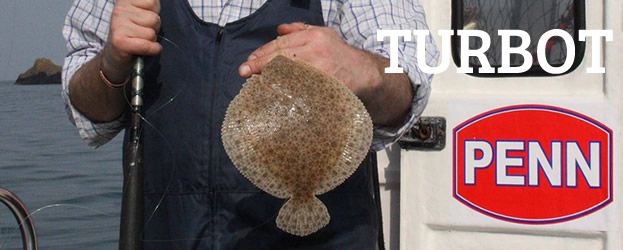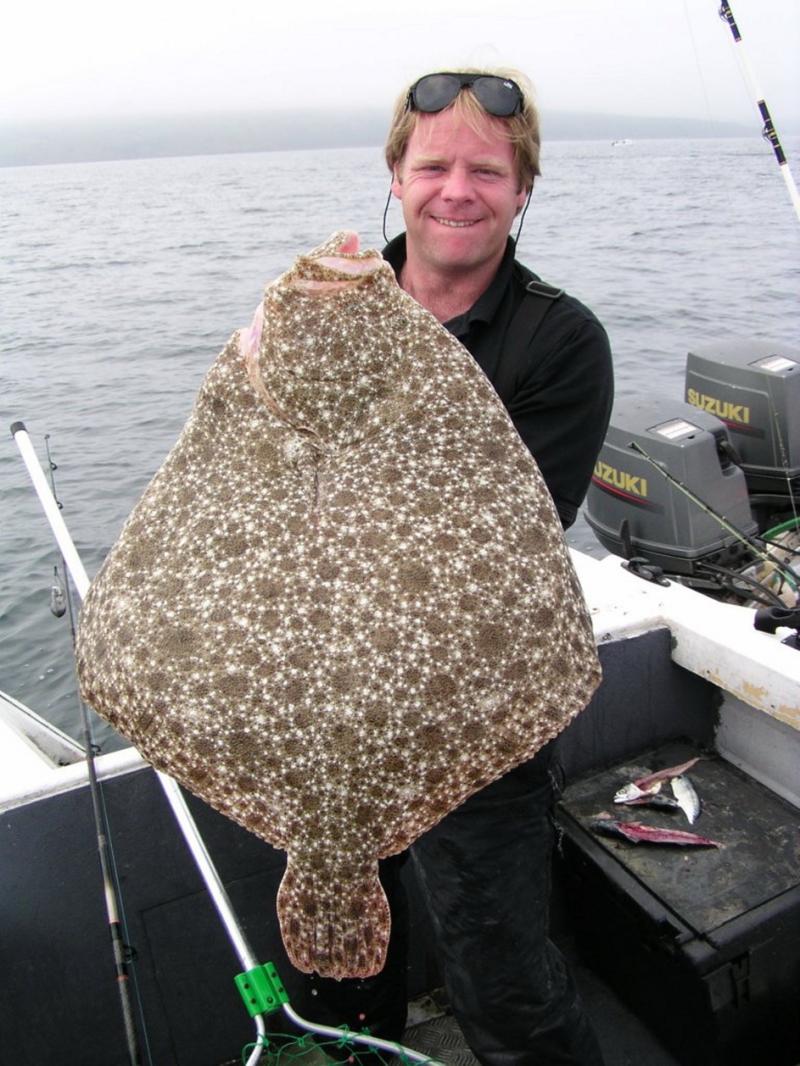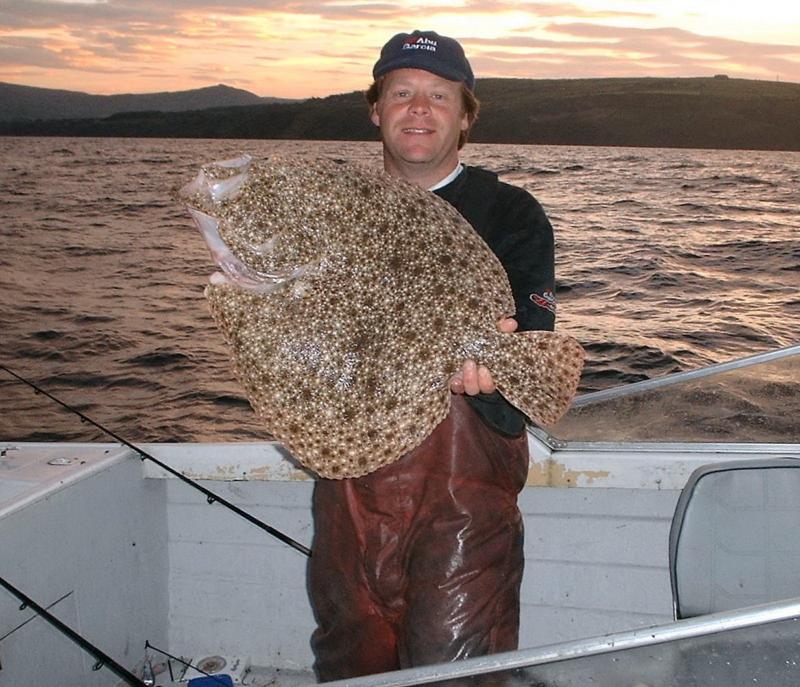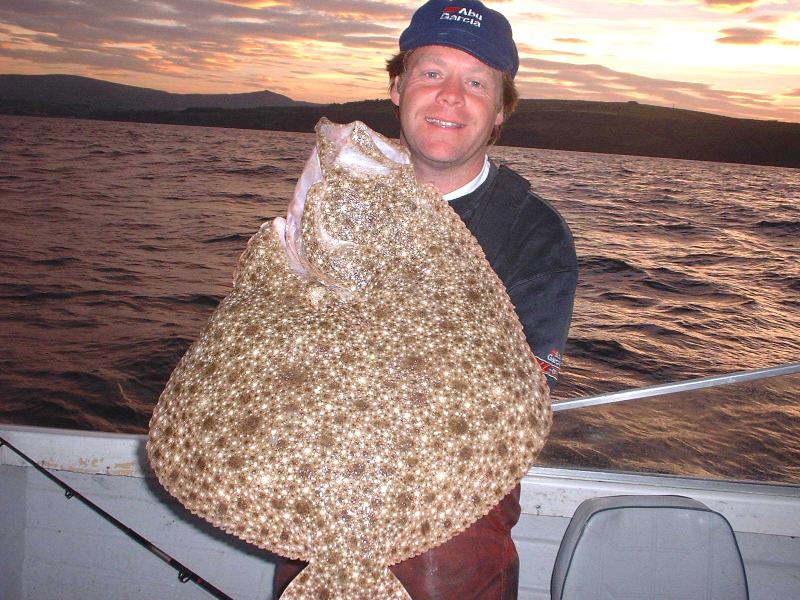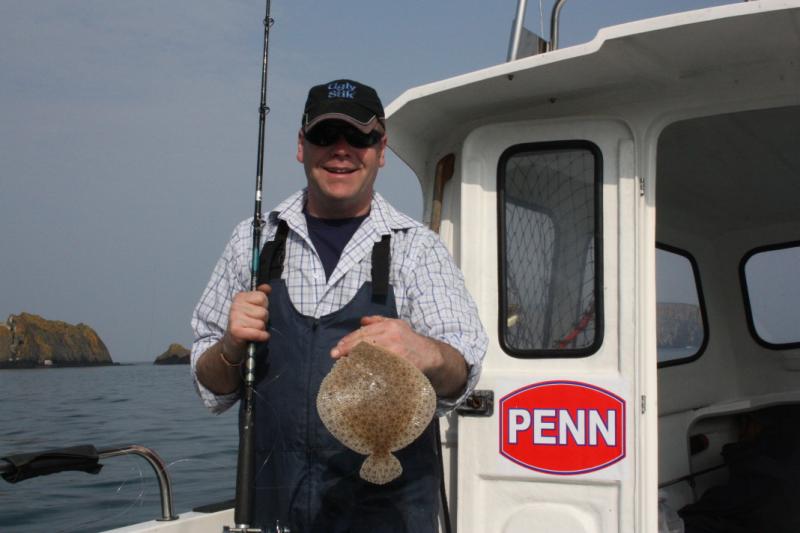Turbot
Turbot (Scophthalmus maximus)
Irish Record 34lb taken on 9.06.1982 by Frank Fleming at Cork Harbour.
Specimen 11.02lb, or 5 kilo
Identification
The original “dust-bin lid”! The large specimens are almost circular, and the flesh is dense and powerful. The under-belly is white and the back is usually a mottled, dark brown covered with lighter circles and darker spots. It always reminds me of a lunar landscape! The skin on the back is also covered in tiny little bumps. The eyes are relatively small, but the mouth and throat are cavernous. The larger specimens could easily swallow a whole Mackerel. The dorsal fin runs from the head to the tail, the anal fin is slightly shorter.
Where to catch
Small Turbot are found all around the coast over clean sand or shingle but larger specimens are few and far between these days. Proof of this, if it were needed, can be found in the yearly specimen reports. The Specimen Fish Committee have reduced the qualifying weight of Turbot in recent years and worringly; still show no reports of common capture. The Causeway coast on the North-east held many large Turbot at one time and may still produce decent fish to a lesser extent. Further South along the Antrim coast has a few hotspots in areas such as Red Bay and Glenarm, but all have unfortunately suffered the curse of the commercial nets it seems. Large sandy bays around the Donegal coastline, notably Mulroy Bay regularly record Turbot catches, usually smaller fish of the 3lb-6lb class. The odd specimen shows up around sand banks off Tory Island and good Turbot can still be had down the West coast around Belmullet. Cork Harbour is a fair venue for this species although it is fair to say that few marks have the ability to produce double-figure fish any more.
When to catch
The best time to catch Turbot would be from late spring through to October, although a few fish show up on surf beaches in early winter.
Bait
As Turbot are almost entirely predatory, with an almost telescopic mouth that sucks in un-wary bait fish as they pass over-head, the best baits are large Sand eel, launce or any fish bait resembling them. Long fillets or belly strips of Mackerel are excellent bait and even a pirk bounced off the sea bed representing a wounded launce entices Turbot from time to time.
Methods
Most Turbot fishing is carried out over off-shore, drifting over sandbanks, clean or broken ground, or behind obstructions such as wrecks or reefs. They prefer strong tides and snap up unwary prey, as they are washed or swim past. Most of my larger fish have been taken at anchor, with a good scent trail of chopped Mackerel and bran in an onion sack attached to the anchor, fished over a flooding tide.
A long, flowing trace is the best choice. Many anglers use beads and spoons as attractors but fresh bait on a long flowing trace is the important factor. A strong hook is recommended, around size 4/0 coupled with at least 30lb line. Hook the Mackerel belly strip once through the thicker end, and it will “wiggle” enticingly and realistically in the tidal current. Turbot have a large mouth and will powerfully “suck-in” large bait. Although not a particularly hard-fighting fish, larger specimens will give you some problems, using the tidal flow to its maximum and test your terminal tackle to its limit!




